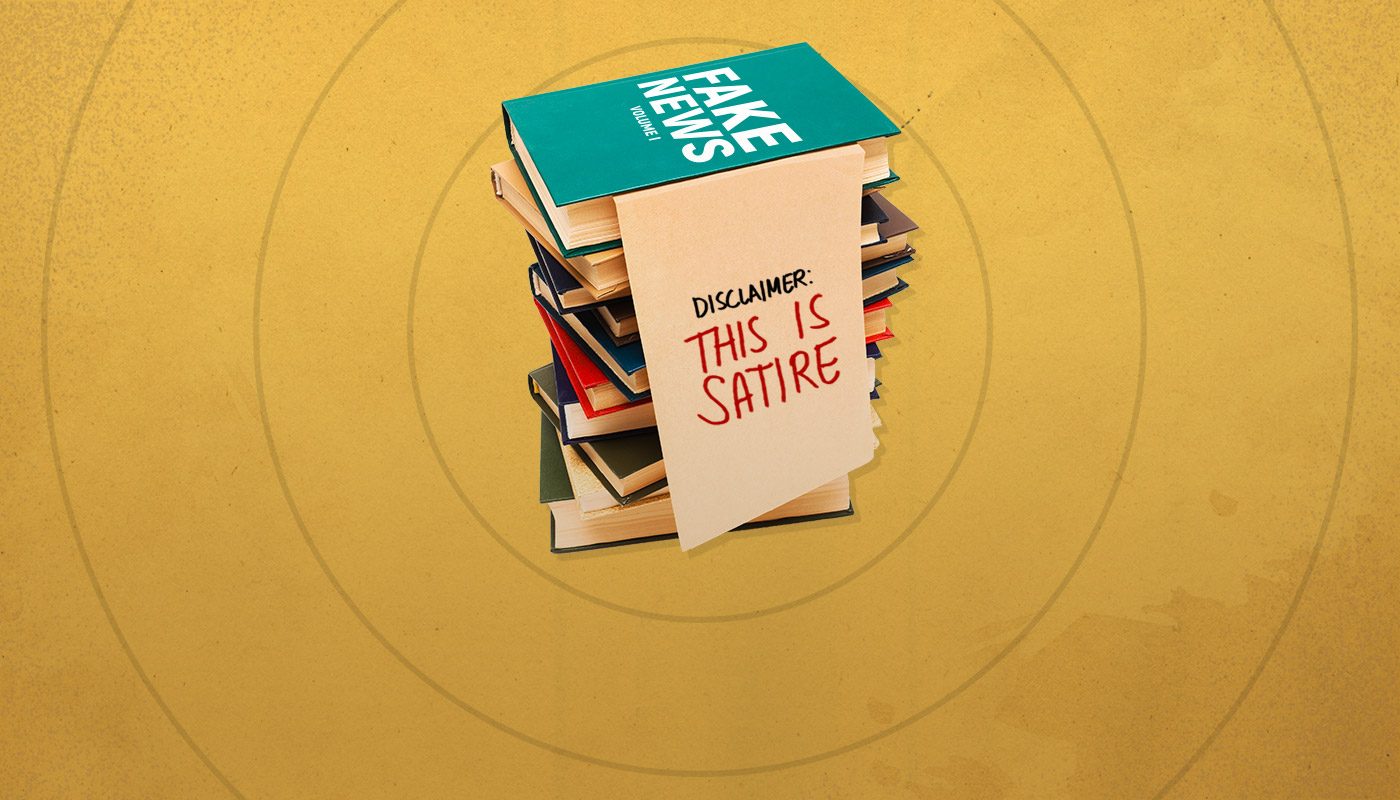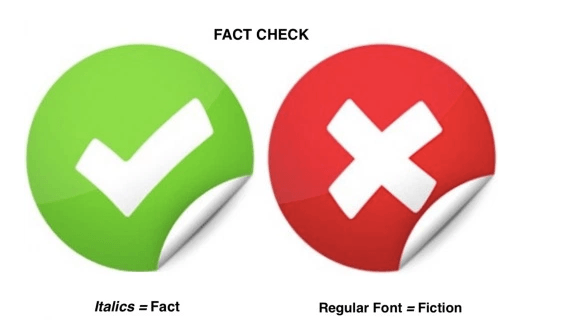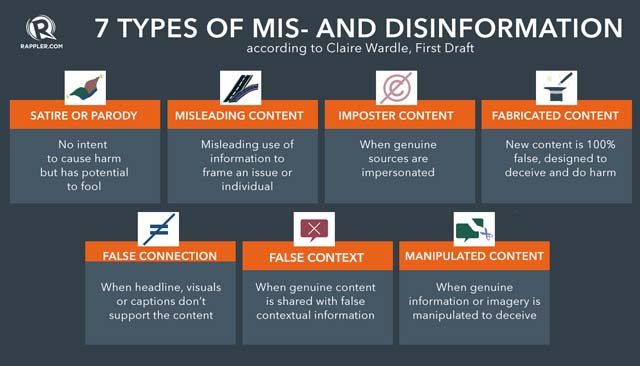SUMMARY
This is AI generated summarization, which may have errors. For context, always refer to the full article.

MANILA, Philippines – On May 1, 2016, website Adobo Chronicles published a story claiming that then vice presidential candidate Leni Robredo said she would immediately resign if she got elected alongside Davao City Mayor Rodrigo Duterte, a presidential candidate at the time.
The website quoted Robredo as saying, “Duterte and I are the exact opposites and I don’t see working with him even remotely possible.”
The story was popular among Duterte’s online supporters, having been posted 94 times on 42 Facebook groups and pages, and shared more than 77,000 times. Netizens expressed anger at a “selfish” Robredo.
Many of those who shared the story, however, missed an important point: Adobo Chronicles considers itself a “satirical” website. Nothing in the piece was real.
But just what is satire – and does one escape accountability for spreading false information by using this literary genre as an excuse?
It’s complicated
Satire is a literary form that involves an expert balance of criticism and humor; it takes a very deft hand to write, as it needs to tick very specific boxes to be considered successful.
According to A Glossary of Literary Terms, edited by Abrams and Wadsworth, “satiric comedy ridicules political policies or philosophical doctrines, or else attacks deviations from the social order by making ridiculous the violators of its standards of morals or manners.”
The most important characteristic of the form, then, is hyperbole or exaggeration: a piece is satirical when it takes a tidbit of real life and blows it out of proportion. Other comic devices that can also be present are paradoxes, or clearly contradictory statements; highly sarcastic and biting remarks; puns or wordplay; and even slapstick scenarios.
It’s also key, however, that the piece is not only funny, but also draws attention to an uncomfortable truth at the same time, in the hopes that society improves by knowing of this truth.
“The true satirist,” according to A Handbook to Literature, edited by Thrall, Hubbard, and Holman, “is conscious of the frailty of institutions of man’s devising and attempts through laughter not so much to tear them down as to inspire a remodelling.”
It’s not satire
Adobo Chronicles‘ article does not, in any way, attempt to tick any of satire’s main boxes. It neither goes out of its way to be absurd, nor tries to tell a universal truth – both of which are needed for a piece to be seriously deemed satirical. It simply misinforms.
Its main tactic for doing so is mixing real-life facts with out-and-out falsehoods, all without a trace of humor.
The piece opens with Robredo’s real-life admission that it would be difficult for her to work with Duterte should he win. It is then followed by barefaced lies, most markedly: “With those words, Robredo said that if Duterte becomes president and she is elected vice president, she would resign from her post on the first day in office.”
Juxtaposing these two statements can thus disorient the reader and make it difficult for them to distinguish what is and isn’t true.

The goal of satire, however, shouldn’t be to confuse. It is not satire’s purpose to be mistaken for the truth. This is why humor is so integral to the art of satire; it’s these little bursts of hilarity and absurdity that explicitly remind the reader that what they are reading is not real.
Even if satire takes the form of a typical news article, for instance, it only does so on the surface: it has a headline, its details are arranged from most important to least important, it features supposed quotes from its subjects, etc. But once you actually read the content, it should be apparent that this is only a parody of a news article, and that there is no such real-life event being taken into account.
This simply wasn’t the case for Adobo Chronicles’ piece, and a quick look through the comments on Facebook would have already showed its writers that many people were missing out on it being satire.
In fact, the disinformation became so widespread that just a week after it was published, Robredo had to respond to it. “Wala po ako sinabing ganyan (I didn’t say anything like that),” she told reporters in a press conference.
Disclaimers don’t make a piece satire
In a statement issued in May 2018, Adobo Chronicles defended its “satirical” pieces by saying that it has “disclaimers all over” its website and that it is a “registered news satire site with the US Patent and Trademark Office.”
But either a piece is satirical or it isn’t. Writing something and then labeling it as satire doesn’t make it so.
Initially, when one reads an Adobo Chronicles piece, this “disclaimer” will only be seen if the reader decides to go to the “About us” page, or scroll to the bottom of the story page where it is written in small font.
The site then took its defense a step further around mid-2016, making the following addition to its “About us” page:
NEW FORMAT: The Adobo Chronicles has recently adopted a new format to help readers distinguish between fact and fiction. Statements and paragraphs in our posts that are in italics represent the facts. The rest are fiction.
Additional graphics are also at the end of each article, labeling italicized or factual statements with a green check, and regular font or fictional statements with a red x-mark.

This attempt at clarifying Adobo Chronicles’ intent, ironically, makes its pieces not only more confusing, but drives home the point that what it does is not satire.
True satire pieces do not stoop down to explaining to its readers which parts are made up and which aren’t. Satire is meant to be read unencumbered by clues, much less spoonfeeding by way of font changes and a warning flash of red and green. It’s supposed to spark the reader’s critical thinking and not hamper it. (It also goes without saying that constantly being reminded which sentence is or isn’t factual is a jarring, bizarre experience that does not make for decent reading.)
Muddying the waters further are the memes produced and posted by Adobo Chronicles on Facebook, where “disclaimers” won’t be found (except through the vague slogan on the About section of its Facebook page, “Your source of up-to-date, unbelievable news!”).
Allowing this thinking opens the floodgates to another problem: purveyors of fake news will now be able to escape accountability by simply labeling their stories as satire, no matter the intention, how badly written they are, how many clues they use to overrationalize, or even if they disregard every rule of satire.
Following their logic, for example, fake news website OKD2 could get away with its story on Catholic bishops “condemning” the death of terrorist leaders, because it was filed under the “Humor and Satire” section.

Adobo Chronicles can take their cue from other legitimate satirical websites like The Onion and Reductress.
Both American companies, The Onion publishes satirical articles on international, national, and local news while the latter has a feminist agenda, publishing satire targeted towards women. The Onion and Reductress do not have nearly as many disclaimers on their websites as Adobo Chronicles. In fact, their disclaimers can only be found in their “About Us” page.
Despite this, it’s still relatively easy for readers to know that stories published by The Onion and Reductress are satirical because they are written with great humor and exaggeration.
In an interview with WISN 12, Scott Dikkers, the founder of The Onion, himself said that there’s a big difference between fake news and satire.

“It’s totally different from fake news, and it bothers me when those fake news organizations are basically out there printing lies or propaganda [and] label themselves satire,” Dikkers said.
Dikkers also said, in an interview with the Wisconsin Public Radio, that The Onion’s intention is never to deliberately mislead the public, but to entertain and make people laugh. Anyone with “half a brain cell” knew it wasn’t real, he added.
Fake news vs satire
Since fake news became a global concern, the role that satire plays in the disinformation ecosystem online has been a gray area for newsrooms and fact-checkers.
Despite being a genuine literary form, satire’s potential to misinform has always been recognized by researchers around the world.
Fact-checking website Snopes sparked controversy in March 2018 when it fact-checked a story by satire site, The Babylon Bee. In November 2017, an infamous satirical website in the US had to apologize for writing a piece that seemed too real.
First Draft’s Claire Wardle even included satire among the 7 types of mis- and disinformation, saying that it has “no intention to harm but has potential to fool.”

A study by Colorado State University undergraduate student Michele Bedard and Chianna Schoenthaler, as reported by Poynter, also showed that this potential to fool varies depending on the reader demographics.
Through online surveys and focus groups, the two showed participants 27 screenshots of posts in a Facebook feed and asked them to pick a category: fake news or satire.
They found out that the youngest and oldest participants were least likely to accurately distinguish between fake news and satire, while women and the more educated people fared better, according to Poynter.
This is why websites like Adobo Chronicles need to be more responsible for what they publish, and not just hide behind disclaimers and differing fonts. They chose a complex literary genre made even more complicated by an information ecosystem that’s been corrupted by fake news and disinformation; they cannot afford to put out something half-baked without being disingenuous.
If a piece is badly written, the onus is not on the reader to correctly interpret it. Every writer who aims to communicate specific messages, regardless of whether the piece is meant to be funny or not, has to first master being comprehensible and consistent. Even a simple knock-knock joke still has to be worded and delivered well for it to work. A stand-up comic can’t claim to be good if the audience isn’t laughing.
At the core of it, if your readers can’t tell that what you’ve written is satire, or if political Facebook pages (especially those notorious for spreading disinformation) are sharing them like they’re actual news reports, isn’t that a sign that something is wrong with it? – Rappler.com
Add a comment
How does this make you feel?
![[DECODED] The Philippines and Brazil have a lot in common. Online toxicity is one.](https://www.rappler.com/tachyon/2024/07/misogyny-tech-carousel-revised-decoded-july-2024.jpg?resize=257%2C257&crop_strategy=attention)




There are no comments yet. Add your comment to start the conversation.